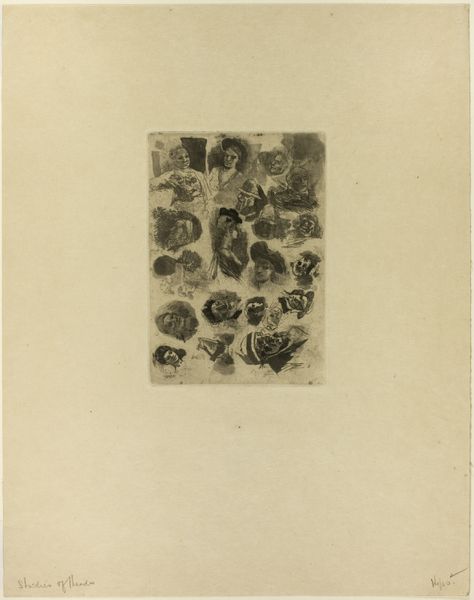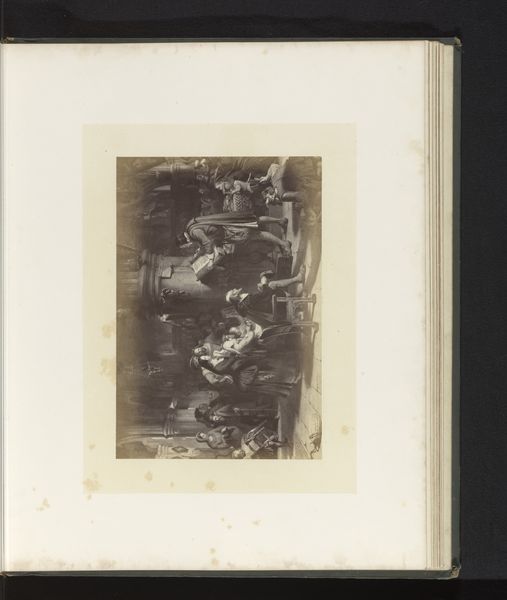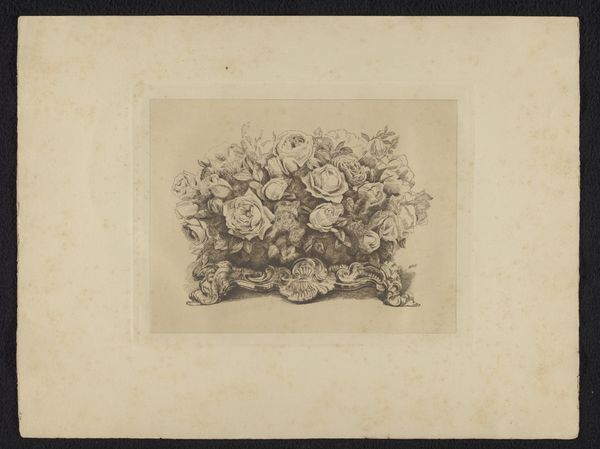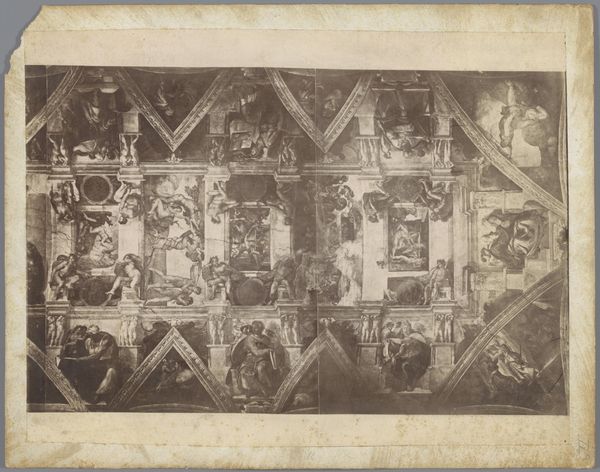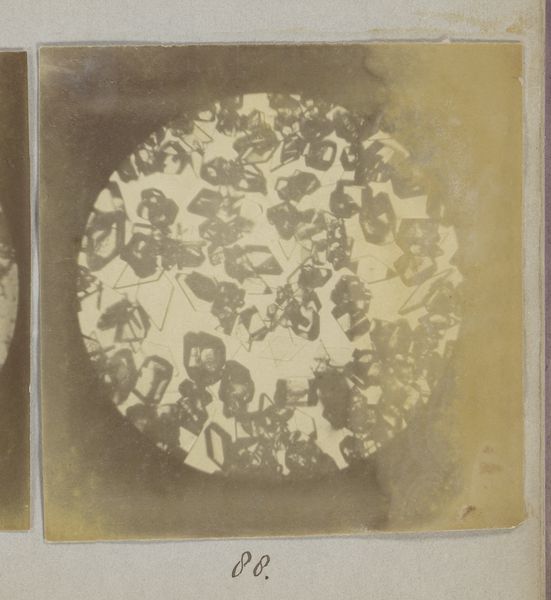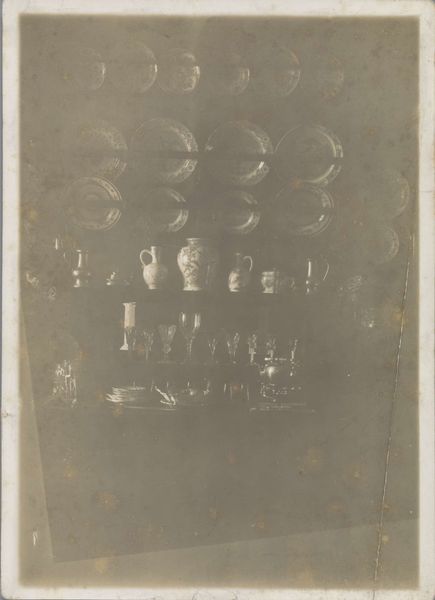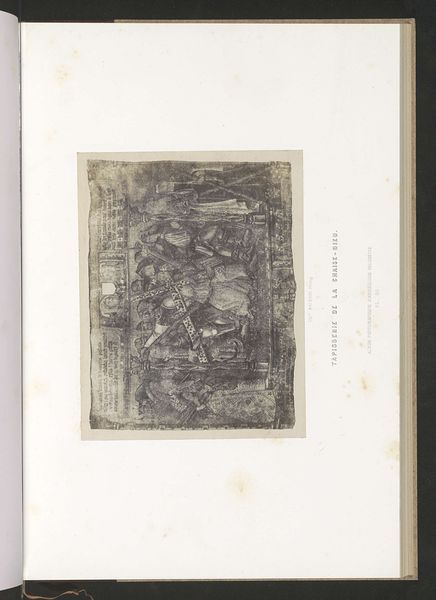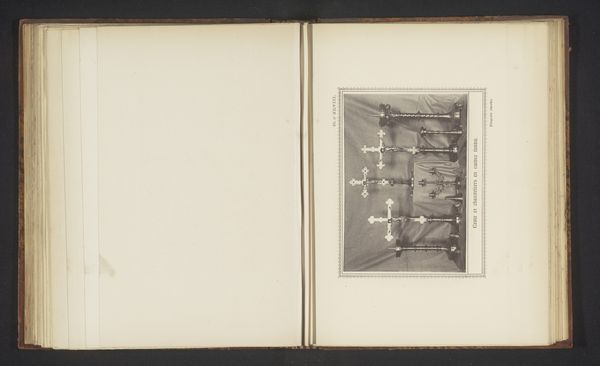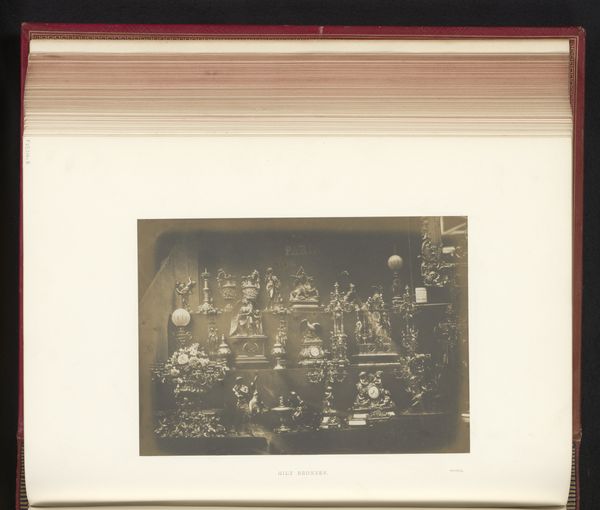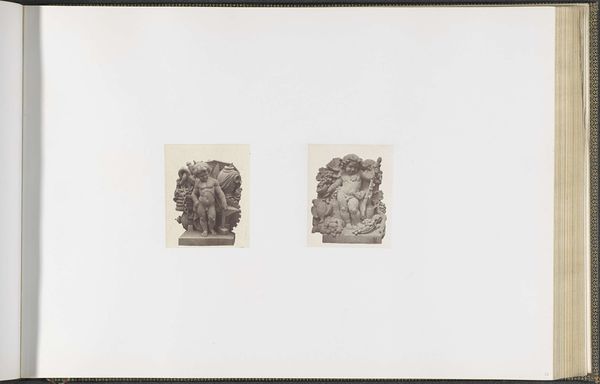
Fotoreproductie van de fresco's van Michelangelo in de Sixtijnse kapel 1851 - 1900
0:00
0:00
print, fresco, photography, gelatin-silver-print
# print
#
fresco
#
photography
#
gelatin-silver-print
#
history-painting
#
italian-renaissance
Dimensions: height 256 mm, width 197 mm, height 256 mm, width 357 mm
Copyright: Rijks Museum: Open Domain
Editor: This is a gelatin silver print from between 1851 and 1900 of Michelangelo’s frescoes in the Sistine Chapel. It's a photo reproduction, capturing the entire ceiling. It feels like such a removed and mediated experience of this famous artwork, almost flattened by the photographic process. What do you see in this image, given its historical context? Curator: It's crucial to consider this work as more than a mere reproduction. It comes from a time of immense social change and burgeoning photographic technology. The project of reproducing the Sistine Chapel served a political purpose, distributing the canon to a wider audience. Photography here participates in power dynamics, democratizing access but simultaneously recontextualizing sacred art. Editor: So you're saying this photograph is as much about power and access as it is about art? Curator: Precisely. Consider the historical moment. This photograph allows widespread consumption of an artwork previously only accessible to the privileged who could travel to the Vatican. What impact did the widespread distribution of religious iconography have on belief and societal structures at the time? Editor: I never really thought about it that way. It challenges the singular narrative of Michelangelo as the sole creator, instead bringing up ideas about authorship, distribution, and even propaganda. Curator: Absolutely. It forces us to consider who benefits from the dissemination of such images and how they reinforce or challenge existing power structures. It’s also interesting to analyze from the point of view of labor, both regarding the making of the frescos, but also in relation to this specific photo reproduction. Editor: That's fascinating. It gives me a whole new way to view historical reproductions, not as secondary to the original, but as cultural objects in their own right, participating in complex dialogues about access and power. Curator: Indeed. We are actively rewriting art history by critically analyzing these often overlooked pieces.
Comments
No comments
Be the first to comment and join the conversation on the ultimate creative platform.

